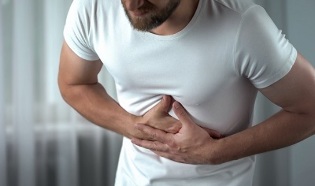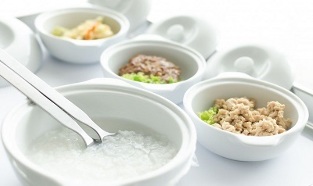Pancreatitis is a disease of inflammation of the pancreas. It plays a huge role in the digestive system-it regulates energy metabolism, synthesizes digestive juices, and is responsible for the breakdown of carbohydrates.
The enzyme first enters the stomach, then the duodenum, and then begins to be activated. If the pancreas becomes inflamed, the enzymes will start to "work" early-that is, before excretion. Damage appears-the glands begin to digest, which provokes the death of certain cells in the pancreas.

Pancreatitis can be caused by:
- Infectious diseases not related to the digestive system-such as seasonal ARVI;
- Gastrointestinal diseases;
- Unhealthy diet;
- pressure;
- Alcoholism.
Pancreatitis can develop in many forms-acute, reactive and chronic. In acute pancreas, it can be completely or partially inflamed, reacting reactively against the background of digestive system diseases (gastric ulcer and duodenal ulcer, gallbladder or liver).
Chronic diseases can be relieved for a long time, and in most cases the disease progresses slowly. In most cases, improper diet will cause inflammation again.
The nature of the diet in pancreatitis plays an important role-it is impossible to prevent the disease from getting worse without adhering to a special diet. What are these diets and what are the principles of the pancreatitis menu?
Nutritional principles of pancreatic inflammation
The main principle of formulating a diet is to minimize the load on the pancreatic organs, in which the function of the pancreas is normalized.
For adults who are getting worse, doctors give the following advice-"Hunger, cold and rest". If the patient is in the hospital and the pancreatitis is in the acute phase, he is advised to refuse food for 2-3 days, and useful substances (salt and liquid) will enter the body for drip. If you are starving, it is impossible to completely ensure the balance of water and electrolytes. You should and can drink, but only in small amounts.
Even adults need to replenish their nutritional reserves. A specially designed diet can help you. Table 5 is the most "verified".
The principle of this diet:
- Create the most mild conditions for the stomach and intestines through mechanical and chemical unloading;
- Eliminate pancreatic dysfunction;
- Prevent negative changes in liver tissue-fat infiltration;
- Reduce the excitability of the gallbladder.
Eating should not only be done during the treatment of the disease, but also for another year after the disease has resolved.
The main characteristics of dietary treatment of pancreatitis:

- In the daily menu, you should limit the number of products that contain extractive substances-to stimulate the production of pancreatic enzymes:
- Refractory fat;
- Purine;
- Essential oil;
- Cholesterol;
- coarse fiber;
- Glucose.
- Diet-foods with high protein content can reduce carbohydrate and fat content.
- Cooking techniques-cooking, steaming, baking with foil, stewing.
- Food snacks-eat up to six times a day. You need to stand up from the table with a slight malnutrition to avoid overloading the pancreas.
- For the first time after getting worse, you can only eat pureed food.
- Seasonings-including salt-must be temporarily abandoned;
- You should not eat hot or cold food. Food should be heated to approximately -36°C.
Restricted drinking regime. You can drink any number of drinks only after the desire to vomit has completely subsided.
Don't worry about dietary restrictions in the first few days after the attack-fasting during treatment is useful.
Pancreatitis diet menu
When writing a menu due to worsening pancreatitis a few days later, you need to immediately consider its function-the product must be wiped. For example, if the meat is souffle or meatballs, then potatoes are mashed potatoes, etc. . .
The menu consists of the following products-their approximate list:
- Baby food-you can use canned and powder-packaged products, and then dilute them with liquid;
- Mashed potatoes mashed with cauliflower or cabbage;
- Cheese puree.
The ratio of nutrients in the daily menu-fat-50-70 g, protein-130-150 g, carbohydrate-300-320 g.
About 2-4 days after the aggravation, the nausea disappears and it is necessary to restore the amount of fluid in the body. You need to sip about 1. 5 liters of water every 6 hours every day. After eliminating the pain, gradually introduce more "heavy" dishes into the diet, with a name for each meal.
From now-about the 4th day-the menu includes the following dishes and products:
- Kefir-low fat only;
- Chicken breast broth;
- Egg white omelet; Juice from non-acidic berries, diluted with half water;
- Rose hip soup;
- Up to about 30 grams of honey per day;
- Whole wheat rusks;
- Cookies or biscuits without sugar;
- Boiled pasta-pasta or curly hair cannot be used, fine vermicelli should be given priority;
- The porridge can be wiped through a sieve and is accompanied by pancreatitis. You can cook the porridge with buckwheat and oatmeal (some nutritionists allow semolina, but it must be fully cooked to avoid swelling in the stomach).
You can eat the following foods:
- Lean meat-chicken breast, beef, rabbit;
- Fish-cooked but only meat, fish soup and other soups can be used in broth;
- Fruit-baked or blanched;
- Broth-secondary;
- Vegetable puree-broccoli, cauliflower, pumpkin.
The nature of the pancreatitis diet depends on the general condition of the patient.
How to change the nutritional model of pancreatitis
In the first few days after chronic pancreatitis worsens, the approximate diet menu is as follows:

1 day:
- Breakfast-half oatmeal soup and half a cup of mineral water;
- Dessert-baked apple, without peel and sugar;
- Lunch-mashed potatoes-half a serving-with milk and no spices;
- Afternoon tea-jelly and rusk powder;
- Dinner-buckwheat porridge, served with light tea and bleached milk;
- Bedtime-Dilute some milk with water.
Day 2:
- Breakfast-steamed egg white omelet, chamomile soup;
- Snacks-roasted pears;
- Lunch-pearl barley soup, grated with water, toast and candied fruit;
- Afternoon tea-milk souffle;
- Dinner-semolina porridge, mashed dried fruits, light tea;
- Go to bed-half a cup of rosehip broth.
In addition, the diet can be slightly reduced-if the situation returns to normal:
- Breakfast-oatmeal and dried fruits, preferably raisins, rosehip broth;
- Snacks-raw bananas;
- Lunch-steamed fish with carrot puree and dried fruit preserves;
- Afternoon tea-cheese flavored with honey;
- Dinner-Milk tea and thin tea porridge;
- Bedtime-half a cup of diluted milk.
The diet for chronic pancreatitis may look like this after the condition returns to normal-daily menu example:
- Breakfast-vegetable puree, a piece of meat crisp, juice diluted with water, light tea;
- Snacks-egg white omelet, steamed chicken breast steak, a slice of dry bread, kefir;
- Lunch-chicken breast noodle soup, cooked vegetables and a slice of steamed fish, bread, dried fruit preserves;
- Afternoon tea-biscuits with sweet jelly and maybe some honey;
- Dinner-couscous, rice porridge (or mashed potatoes), stewed vegetables, tea.
If you feel hungry before going to bed, you can eat crackers, sweet fruits, and drink a glass of kefir.
A well-designed pancreatitis treatment menu will help quickly relieve the disease. You should continue eating for one year after the last deterioration.































